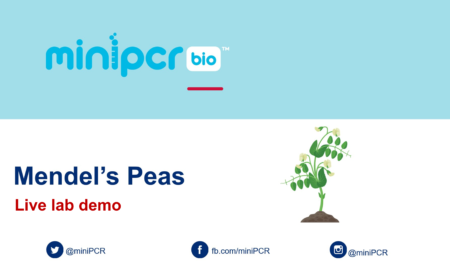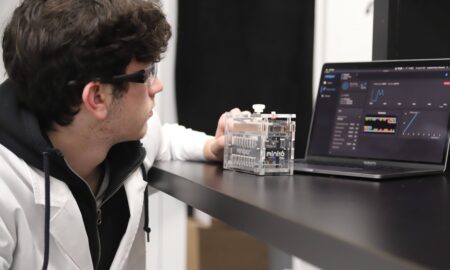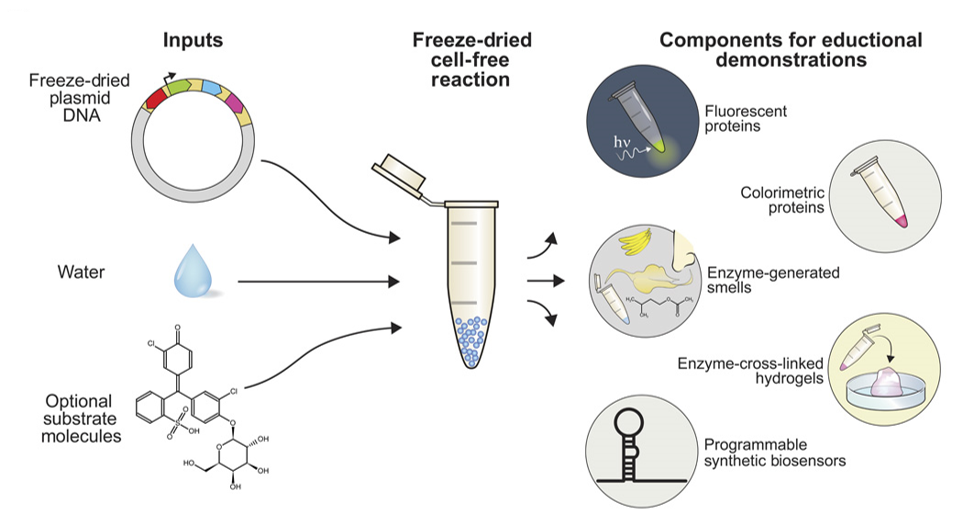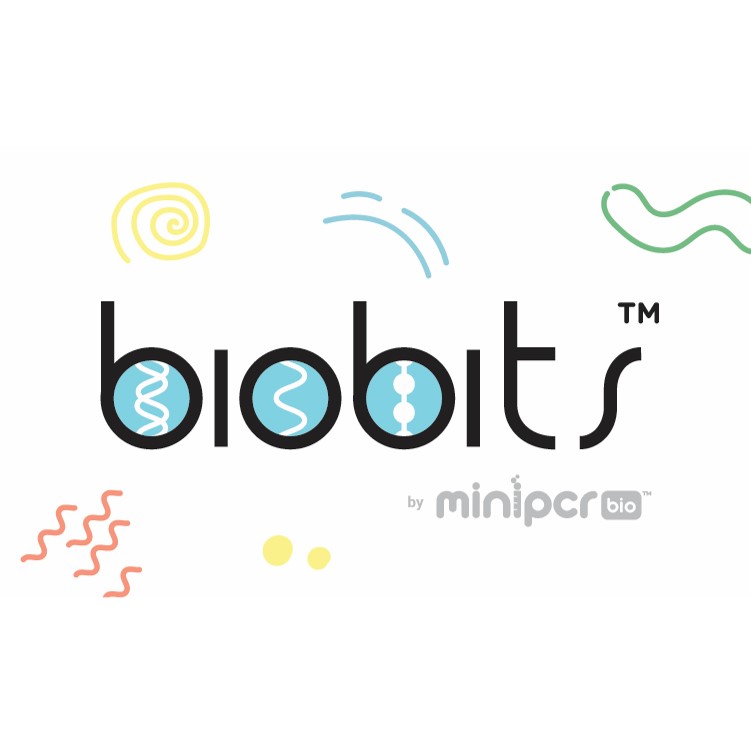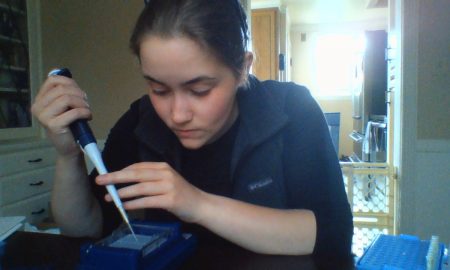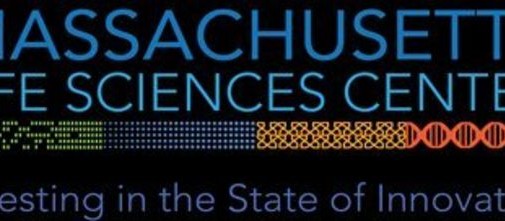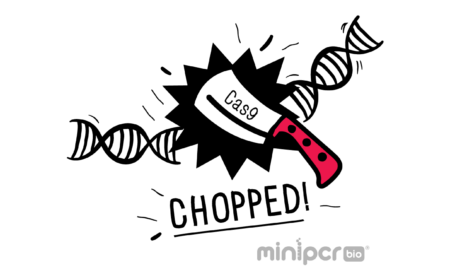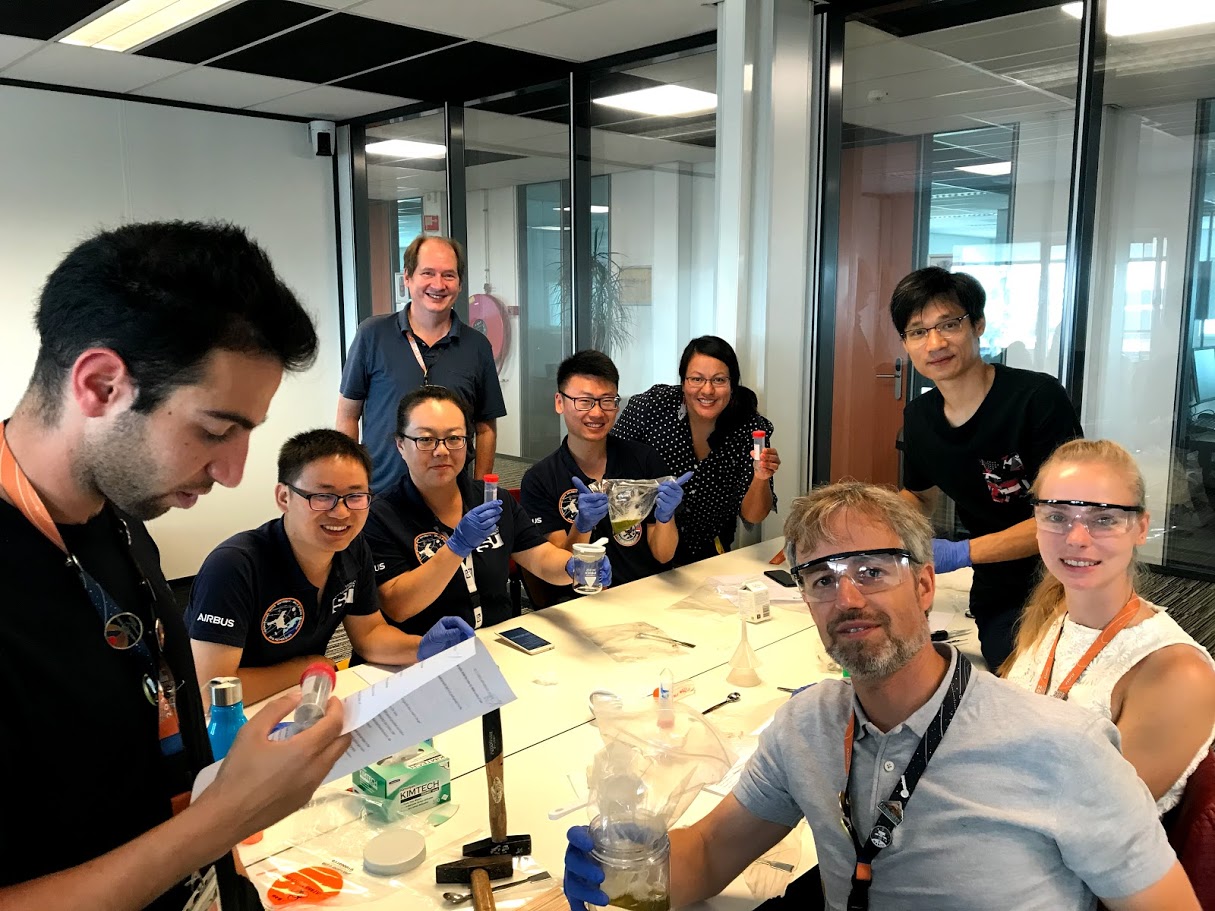DNA101 Lab: Rainbow Gel Electrophoresis
Practice gel electrophoresis with food coloring!
This free lab is now available for download through this link. A kitted version of this Learning Lab is now available in the miniPCR store
You may think that the technology used to match DNA samples, such as solving a crime by visualizing genetic fingerprints, is very complicated and can only be used to analyze DNA. Yet one very important DNA analysis technique, called gel electrophoresis, can actually be used to analyze many different molecules, some as simple as food coloring dyes. In gel electrophoresis, samples are placed in an environment where they move different distances based on their sizes and charges; differences in their movement can reveal information about the molecules themselves.
During gel electrophoresis, an electric current is used to move charged molecules through a gel, usually made of a long sugar molecule called agarose. The gel acts as a sieve, such that smaller molecules move more easily through the gel and travel further than larger molecules, which experience more friction and get slowed down. This allows scientists to separate molecules of different sizes. While positively charged samples move towards the negatively charged pole, negatively charged samples move towards the positively charged pole. These two principles allow for comparison of the molecules present in each sample based on size and charge.
While gel electrophoresis is a process used in complex DNA analyses (like DNA fingerprinting forensics, genotyping, and genetic diagnosis of diseases), it can also be done in your kitchen to separate the dye molecules found in food coloring!
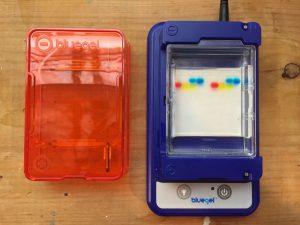
Through gel electrophoresis of food dyes, these labs make the basic components of DNA analysis accessible to everyone.
miniPCR bio™ is excited to share some do-it-yourself activities for separating food dyes using gel electrophoresis, the same technology used in labs to analyze real DNA. These activities use student-friendly language to explain gel electrophoresis and DNA analysis, while making those concepts simple by applying them to everyday food dyes. Just like molecules of DNA, each dye molecule has its own unique size and charge that can be identified using gel electrophoresis. Some food dyes are actually mixtures of two or more molecules. And best of all, they make for a visually appealing hands-on STEAM experience!
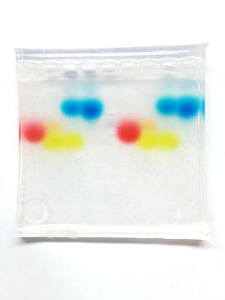
Related resources:
- DIY Rainbow Lab
- Bandit STEM Electrophoresis Kit
- Molecular Rainbow Learning Lab
- Gel Electrophoresis Teaching Resources

